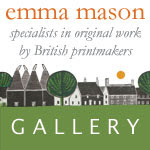Brighton Museum & Art Gallery
Brighton Art and Design Map
Brighton Museum is housed in a beautiful regency building - completed in 1808, by architect George Porden, the building was commissioned by the Prince Regent (who became George IV) as a stable block and riding school. It was then one of the largest buildings of its kind in the world, with room to stable up to 60 horses. As well as the museum and the Brighton History Centre, the building now also houses the Brighton Dome Concert Hall and the Corn Exchange.
The Museum sits in the beautiful restored regency gardens of the Royal Pavilion – perfect for a picnic on a grass. The Gallery and related cafe are well used by locals for a break at lunchtime as well as visitors to the town.
Brighton Museum is an excellent smaller museum with well designed galleries ranging from the Story of Brighton, told in all its glorious and ‘inglorious’ detail, to one of the country's most significant ethnological collections; from punk rock renegade fashion to an international celebration of 20th-century art and design. The collections also contain 2,000 paintings – almost as many as the National Gallery – 15,000 artefacts of world art, 2,000 pieces of historic pottery, and some 10,000 items of costume.
The Museum excels in creative planning and thematic contextualisation. Its objects are displayed with wit and imagination, employing a range of interpretive techniques including the latest interactive information technology. It also encourages local participation. Many of its objects have been donated by the local community, while its oral histories and personal testimonies help bring the city's history to life.
One of the highlights of the Museum is Mr Willett's Poplar Pottery - Willett was convinced that ceramic figures and vessels could tell stories from political, social and cultural history through the images with which 'homely pottery' were decorated.
The main hall of the museum houses the Twentieth Century Art and Design Gallery - a stunning collection of
20th-century furniture, ceramics, glass and metal work from Europe and America including pieces by Gallé, Lalique, Clarice Cliffe and modern masters such as Ron Arad and André Dubreuil. Salvador Dali and Edward James’ Mae West's Lips sofa c1936
Fine art highlights include an important collection of Dutch 17th century paintings, 19th century British landscapes and a major bequest from Paul Heyer’s personal collection of late 20th-century American artists such as Frank Stella, Jules Olitski and Alexander Calder. Upcoming Exhibitions
Upcoming Exhibitions
Ray Kyte: Shirt Tales 10 February to 10 May Café Balcony
The shirts in these photographs are used as a vehicle to explore light, form and texture. They celebrate weave, pattern, colour and design. Most of all they are a means of using fabric as a filter, allowing light penetration to be the purveyor of drama, the nature of each shirt becoming the dictator of mood.
The American Scene: Prints from Hopper to Pollock A British Museum Tour 2 May to 31 August 2009
Admission payable
The American Scene features around 80 outstanding prints by 56 leading modern American artists, including George Bellows, Edward Hopper, Grant Wood, Josef Albers, Alexander Calder, Louise Bourgeois and Jackson Pollock.
The Land Girls: Cinderellas of the Soil 3 October 2009 to 14 March 2010
This new exhibition focuses on Sussex and the land girls who were trained, lived and worked on the Sussex Downs and surrounding areas.
It considers three main themes: women, land and army. Using personal stories, memories, propaganda, paintings, posters, photographs and other objects The Land Girls weaves a narrative around surviving items of their distinctive uniform - where it was made, who wore it, what they did, how women felt about wearing it and the reactions they encountered.
The exhibition also considers the lives of former land girls today and the enduring appeal of an idealised image of the Women’s Land Army in memorabilia, vintage and fashion clothing and re-enactment.
Wednesday, 1 April 2009
Brighton Art & Design Guide - Brighton Museum and Art Gallery
Posted by
Jon
at
09:03
![]()
Labels: Brighton Art and Design Guide
Subscribe to:
Post Comments (Atom)







No comments:
Post a Comment